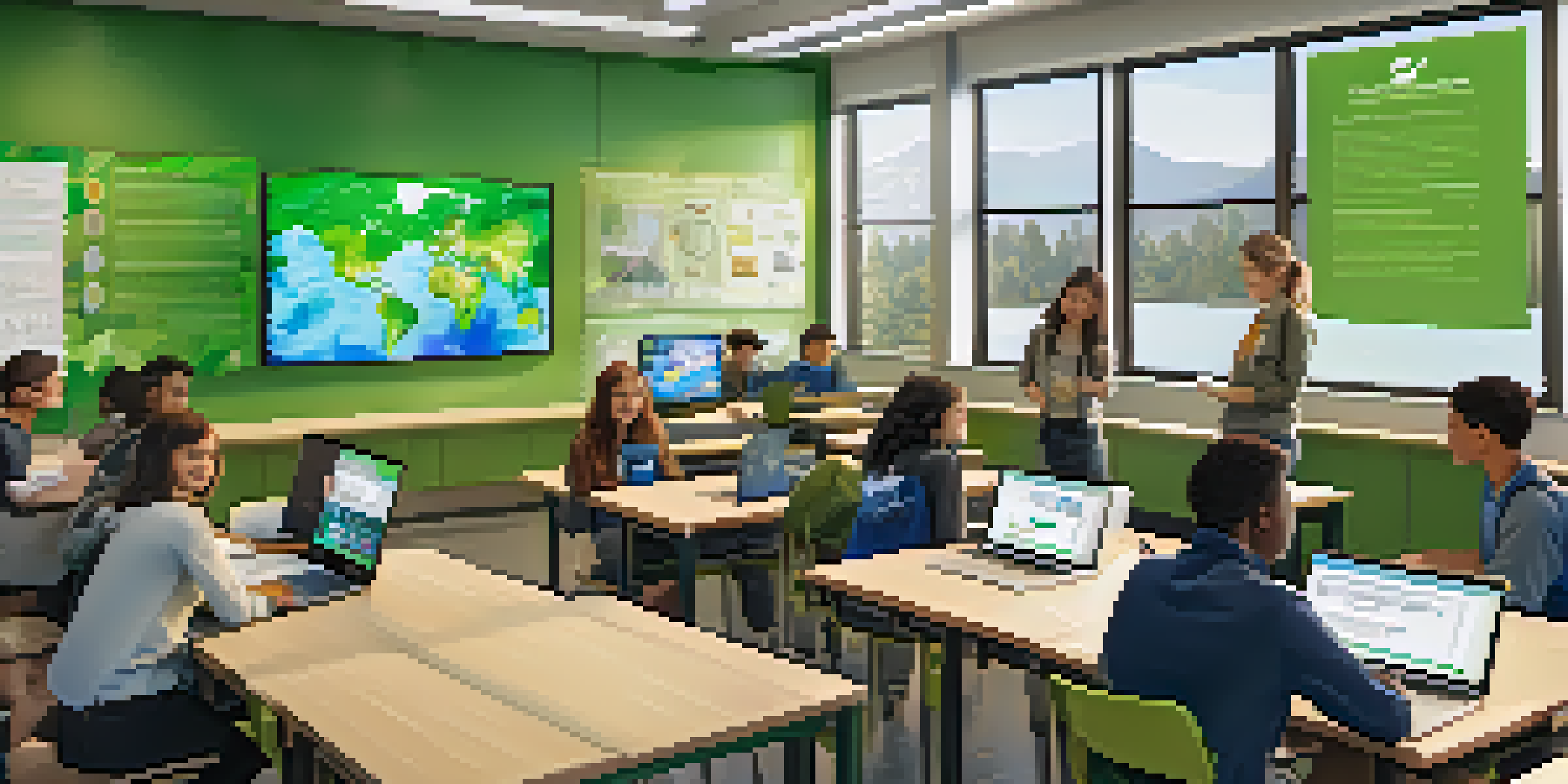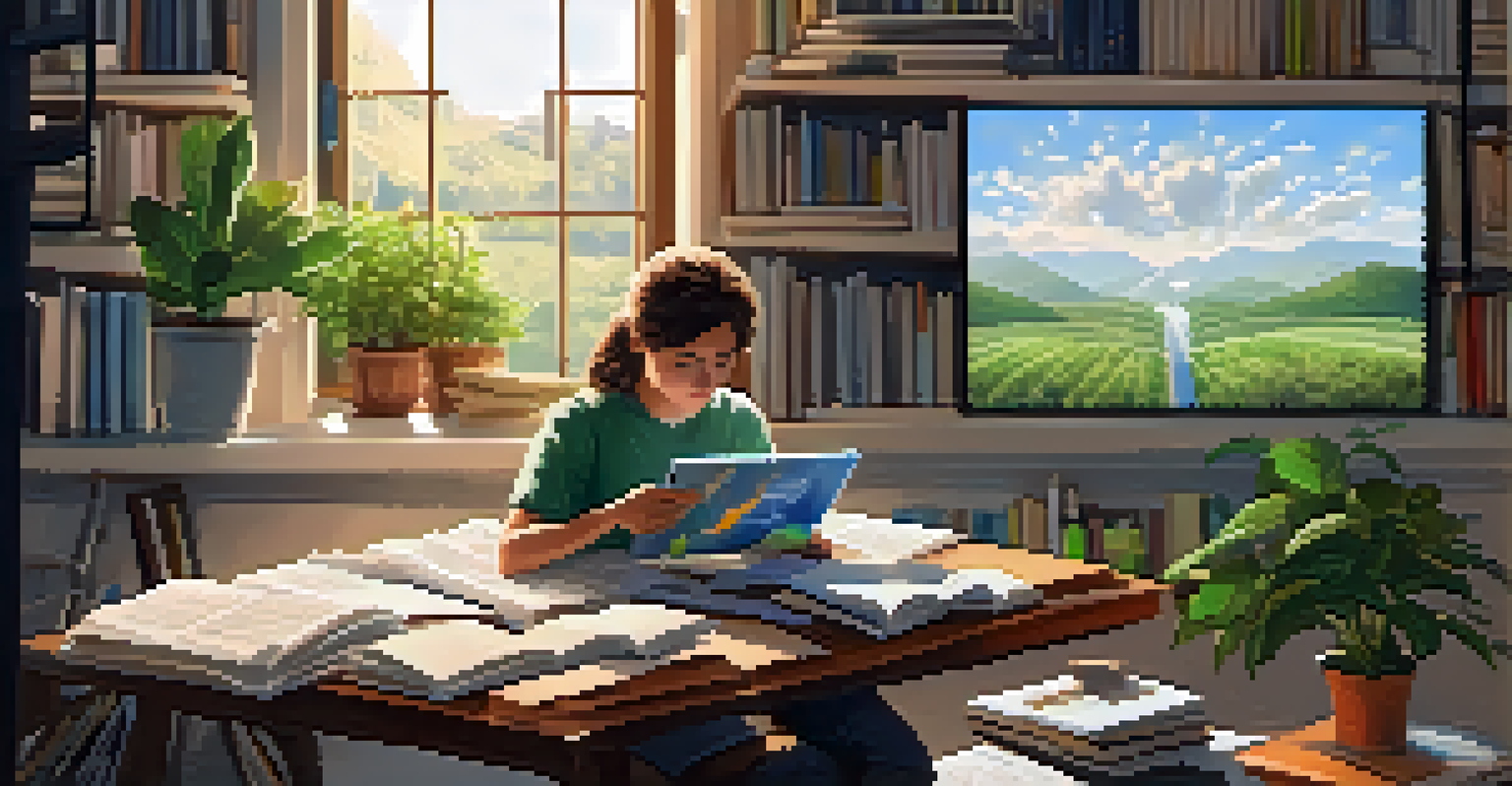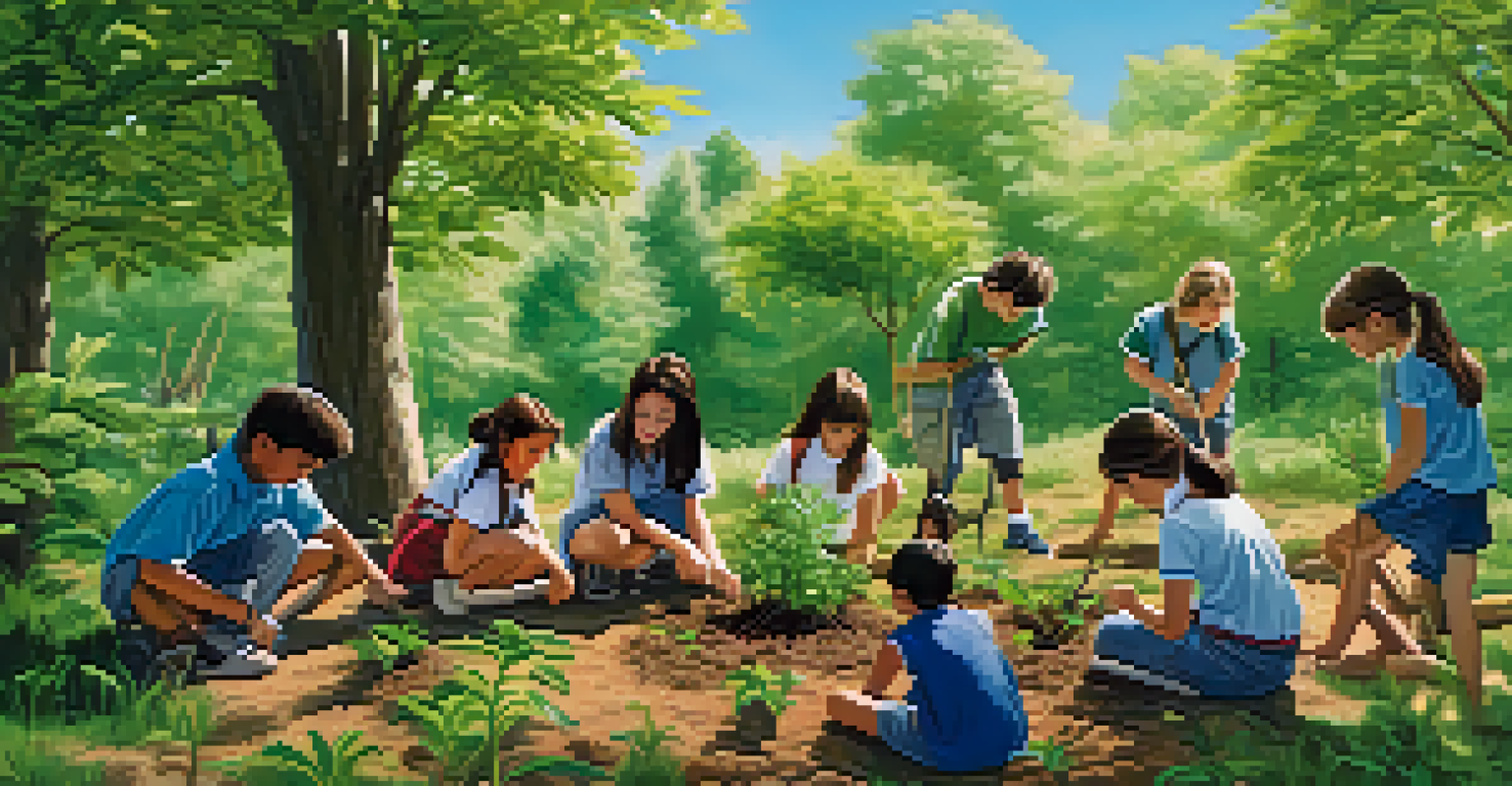Blended Learning for Environmental Education: A Research Study

Understanding Blended Learning in Education
Blended learning combines traditional face-to-face teaching with online activities. This approach allows educators to leverage technology while still maintaining personal interaction. Imagine a classroom where students engage with digital content at home and discuss it with peers in school, creating a rich learning environment.
Education is the most powerful weapon which you can use to change the world.
This method is particularly effective in environmental education, where complex concepts can be simplified through multimedia resources. For instance, a documentary on climate change can be watched at home, and then students can come together to discuss its impact in a classroom setting. This blend of modalities caters to various learning styles and helps reinforce understanding.
Furthermore, blended learning promotes flexibility. Students can learn at their own pace outside of school hours, which can be crucial when dealing with topics that require deeper exploration. This adaptability not only enhances student engagement but also empowers learners to take charge of their education.
The Importance of Environmental Education Today
Environmental education is more vital than ever as our planet faces significant challenges. From climate change to biodiversity loss, understanding these issues equips students with the knowledge to make informed decisions. Think of it as providing them with a toolkit for sustainability, enabling them to contribute positively to their communities.

By integrating environmental topics into the curriculum, we not only educate but inspire action. Students who grasp the importance of conservation and sustainability are more likely to advocate for these causes in their daily lives. This sense of responsibility can lead to broader societal changes, fostering a generation of environmentally conscious citizens.
Blended Learning Enhances Engagement
Combining online resources with in-person discussions increases student motivation and improves knowledge retention.
Moreover, environmental education encourages critical thinking. By analyzing real-world problems, students learn to evaluate evidence, consider multiple viewpoints, and arrive at thoughtful solutions. This skill set is not only applicable to environmental issues but also enhances their overall academic performance.
Research Insights on Blended Learning Effectiveness
Recent studies have shown that blended learning can significantly enhance student outcomes in environmental education. For instance, students exposed to both online resources and hands-on activities tend to retain information longer. This dual approach creates a more comprehensive understanding of environmental topics.
The best way to predict the future is to create it.
Additionally, research indicates that blended learning increases student engagement. When learners interact with dynamic digital content, they are more likely to be motivated and invested in their studies. Picture a student excitedly participating in online discussions about renewable energy sources after watching an engaging video at home.
The evidence suggests that blended learning not only improves knowledge retention but also fosters a love for learning. When students are given the tools to explore topics in depth, they are more likely to pursue further education and careers in environmental fields.
Key Components of Effective Blended Learning
Effective blended learning hinges on several key components: quality content, interactive technology, and supportive teaching practices. High-quality, relevant content is crucial for maintaining student interest and ensuring that the material is engaging. Think of this as the foundation upon which the rest of the learning experience is built.
Interactive technology plays a significant role as well. Tools like quizzes, simulations, and discussion forums can facilitate deeper understanding and collaboration among students. For example, an online simulation of an ecosystem can allow students to experiment with variables and see the outcomes in real-time, enhancing their grasp of ecological principles.
Environmental Education Empowers Action
Teaching students about sustainability equips them with the tools to advocate for positive change in their communities.
Lastly, support from educators is essential. Teachers must be equipped to guide students through both online and in-person learning experiences. By providing feedback and fostering a collaborative environment, educators can help students navigate challenges and celebrate successes in their environmental education journey.
Challenges in Implementing Blended Learning
While blended learning offers numerous benefits, it also presents challenges that educators must navigate. One significant hurdle is ensuring that all students have access to the necessary technology and resources. Imagine a classroom where some students have fast internet access at home while others struggle to connect; this disparity can create inequities in learning.
Moreover, educators may require training to effectively implement blended learning strategies. Understanding how to blend online and in-person activities seamlessly can be daunting for those unfamiliar with the approach. Professional development programs can play a crucial role in equipping teachers with the skills needed to succeed in this evolving educational landscape.
Lastly, there's the challenge of maintaining student motivation. In a blended environment, self-directed learning is crucial, but not all students thrive in such settings. Educators must find creative ways to keep students engaged and accountable, ensuring they stay on track with their learning goals.
Future Trends in Blended Learning for Environmental Education
As technology continues to evolve, so too will the landscape of blended learning in environmental education. We can expect to see an increase in the use of virtual reality (VR) and augmented reality (AR) to immerse students in environmental scenarios. Imagine students exploring a rainforest or coral reef right from their classroom, providing them with unforgettable, real-world experiences.
Additionally, personalized learning paths are likely to grow in popularity. With advancements in data analytics, educators can tailor content to meet individual student needs, helping them progress at their own pace. This customization not only enhances learning outcomes but also fosters a more inclusive educational environment.
Technology Shapes Future Learning
Emerging technologies like VR and personalized learning will enrich environmental education and create immersive experiences.
Finally, collaboration between schools, community organizations, and environmental experts will likely increase. By pooling resources and knowledge, these partnerships can enrich the educational experience, providing students with real-world insights and opportunities to engage in local environmental initiatives.
Conclusion: Embracing Blended Learning for a Greener Future
Blended learning represents a transformative approach to environmental education that can equip future generations with essential knowledge and skills. By blending traditional teaching methods with innovative technology, we can create engaging and effective learning experiences. This dual approach not only deepens understanding but also inspires action towards sustainability.
As we face pressing environmental challenges, the need for informed, passionate advocates has never been more critical. Blended learning can nurture this passion, helping students connect the dots between their education and real-world issues. By fostering a sense of responsibility and agency, we empower young people to be stewards of the planet.

In embracing blended learning, we take a significant step toward a greener future. By investing in the education of our youth and equipping them with the tools to make a difference, we create a ripple effect that can lead to lasting change for our environment.